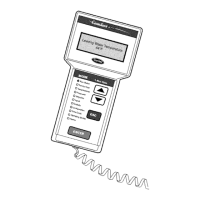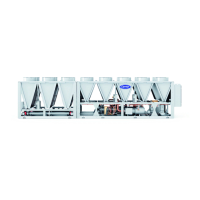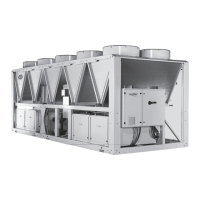5
SAFETY CONSIDERATIONS
1.1 - General description
Installation, start-up and servicing of equipment can be
hazardous if certain factors particular to the installation are
not considered: operating pressures, electrical components,
voltages and the installation site (elevated plinths and built-
up structures).
Only qualified installation engineers and fully trained
technicians are authorised to install and start the equipment.
All instructions and recommendations provided in the service
guide, installation and operation manuals, as well as on tags
accompanying parts supplied separately, must be read,
understood and followed. Failure to comply with the
instructions provided by the manufacturer may result in
injury or product damage.
• Apply all safety standards and practices.
• Wear safety glasses and gloves.
• Use the proper tools to move heavy objects. Move
units carefully and set them down gently.
1.2 - Safety precautions
Only personnel qualified in accordance with IEC
(International Electrotechnical Commission)
recommendations may be permitted access to electrical
components. It is particularly recommended that all sources
of electricity to the unit should be shut off before any work
is begun. Shut off the main power supply at the main circuit
breaker or isolator.
CAUTION: The equipment uses and emits electromagnetic
signals. Tests have shown that the equipment conforms to all
applicable codes with respect to electromagnetic compatibility.
RISK OF ELECTROCUTION: Even when the main circuit
breaker or isolator is switched off, specic circuits may still be
energised as they may be connected to a separate power source.
RISK OF BURNS: Electrical currents may cause components
to get hot. Handle power cable, electrical cables and conduits,
terminal box covers and motor frames with great care.
IMPORTANT: Some specic safety precautions should be
taken in case of HFO units.
For more information about handling the equipment safely,
please refer to the IOM Unit documentation (Installation,
Operation and Maintenance instructions).
CONTROLLER OVERVIEW
2.1 - General description
The Touch Pilot system controls the start-up of the
compressors needed to maintain the desired heat exchanger
entering and leaving water temperature. The controller
manages the operation of the fans in order to maintain the
correct condensing pressure in each circuit. Touch Pilot
constantly monitors safety devices that protect the unit
against failure and guarantee its optimal functioning.
The control system can operate in three independent modes:
• Local mode: The unit is controlled by commands from
the user interface.
• Remote mode: The unit is controlled by dry contacts.
• Network mode: The unit is controlled by network
commands (CCN or BACnet). Data communication
cable is used to connect the unit to the CCN
communication bus.
The operating mode can be selected with the Start/Stop
button (see also section 4.3). When the Touch Pilot system
operates autonomously (Local or Remote), it retains all of
its control capabilities but does not offer any of the features
of the Network. The Network emergency stop command
stops the unit regardless of its active operating type.
2.2 - Abbreviations
In this manual, the refrigeration circuits are called circuit A,
circuit B and circuit C.
CCN Carrier Comfort Network
EMM Energy Management Module
EXV Electronic Expansion Valve
LED Light Emitting Diode
LEN Sensor Bus (internal communication bus linking the basic
board to slave boards)
OAT Outdoor Air Temperature
Network mode Operating type: Network
Operating type: Local O
Local-On Operating type: Local On mode
Local-Schedule Operating type: Local On following a time schedule
Master mode Operating type: master unit (master/slave assembly)
Remote mode Operating type: by remote contacts
VFD Variable Frequency Drive

